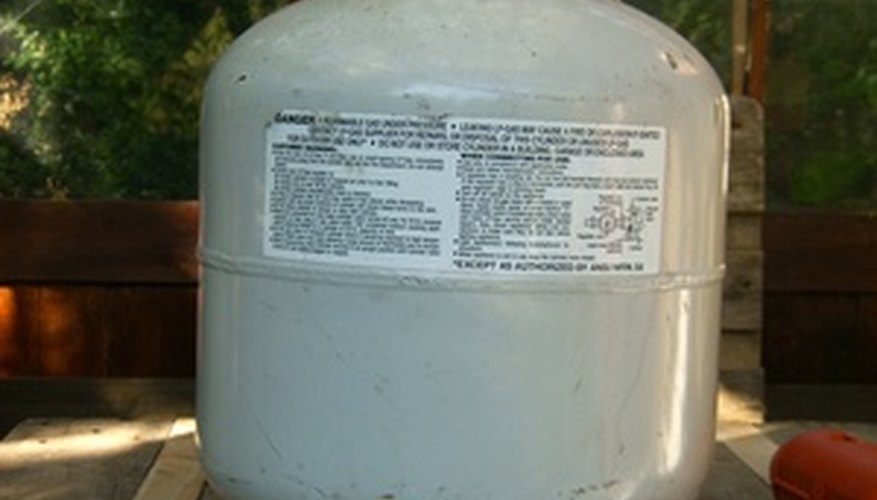There are two tests that can be used to monitor the pressure regulator of a propane tank. The first is a regulator lock-up test and the other is a regulator flow-pressure test. These are usually performed on second-stage, integral two-stage and two-psi service regulators. Any time you check a propane regulator you will need a dependable water-column or U-tube and a manometer that has been calibrated at no pressure, meaning that the water should be at the same level on either side of the zero mark. Testing your regulator should be done annually for proper maintenance and quality assurance.
- There are two tests that can be used to monitor the pressure regulator of a propane tank.
- Any time you check a propane regulator you will need a dependable water-column or U-tube and a manometer that has been calibrated at no pressure, meaning that the water should be at the same level on either side of the zero mark.
Remove the plastic cap on the front of your regulator.
Attach the long end of the manometer tube to the outlet that was hidden by the plastic cap.
Open the valve of the propane tank to allow pressure to build.
Read the manometer by seeing how many inches the water within the tube moves up the board attached to the back of the device. This board attached to the manometer will dictate how many inches the water has moved upwards. Being that it is a U-tube manometer that will be used, at rest the water should remain constant along the zero line, and increase when pressure is applied by the propane regulator.
Remove the manometer by pulling the longer tube off of the outlet, and replace the plastic cap onto the regulator.
- Open the valve of the propane tank to allow pressure to build.
- Remove the manometer by pulling the longer tube off of the outlet, and replace the plastic cap onto the regulator.
Install your water manometer into the outlet test tap of the regulator by following the directions as described above.
Relight all of the pilots of your appliances and operate all appliances using propane at full capacity.
Check the pressure by reading your manometer once all appliances are at full operating capacity. You can find out the appropriate amount of pressure from your propane tank's manufacturer. Each brand and size tank has various pressure specifications.
Do not attempt to readjust your regulator if it fails to provide the required flow pressure when appliances are working at full capacity. Low flow pressure equates to a leak in the propane system, but this test does not provide information on where the leak is. If this is the case, then bring your propane system to a professional to determine the location of the leak.
- Check the pressure by reading your manometer once all appliances are at full operating capacity.
- Low flow pressure equates to a leak in the propane system, but this test does not provide information on where the leak is.
Install a larger regulator if there are no leaks, yet there is strain on the propane system. A strain on the system would be evident if the pressure shown on the manometer is lower than required. Check with the propane system's manufacturer to get an official amount of pressure required for your system, but typically a manometer should not have a reading of more than 14 inches of water or less than 11 inches. If the water fails to move up to 11 inches, then a larger regulator may be necessary and could aid appliances when working at full capacity.
Turn off appliance controls.
Shut off all appliance valves.
Open the container valve in order to maintain pressure on the system. Upon opening this value, the pressure should increase slightly as shown on the manometer, and then stop. The pressure should enter "lock-up," which means that the pressure will increase, stop, then remain constant. The pressure is, in essence, locked.
Monitor the pressure for a minute, watching how much the water rises on the manometer, if it does increase past the initial increase during lock-up. You do not want an increase higher than thirty per cent in pressure. For instance, if your normal pressure was at eleven inches within the water column, then the lock-up pressure should be no greater than 14.3 inches.
- Turn off appliance controls.
- Monitor the pressure for a minute, watching how much the water rises on the manometer, if it does increase past the initial increase during lock-up.
Replace the regulator if the lock-up pressure increases over thirty per cent or if the pressure fails to lock up during the test.
